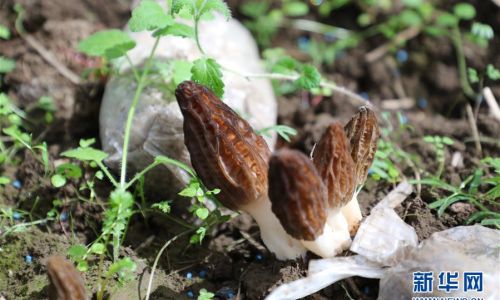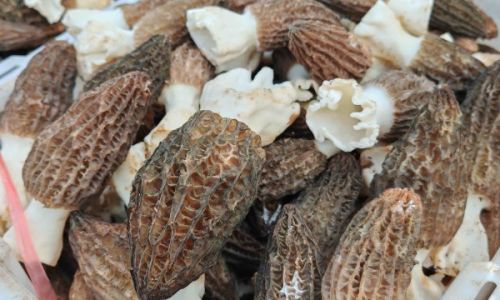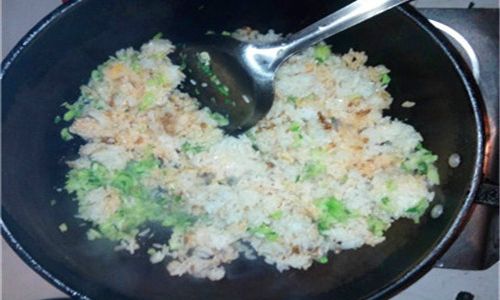Introduction
Morels, known scientifically as Morchella species, are highly esteemed for their unique flavor, texture, and nutritional benefits. These elusive fungi are a culinary delight, often featured in gourmet dishes around the world. However, identifying fresh morels that are of superior quality can be challenging, especially for those unfamiliar with their distinct characteristics. This guide aims to provide a comprehensive understanding of how to discern the quality of fresh morels, ensuring that you bring home the best possible specimens for your culinary endeavors.
Understanding Morel Morphology
Before diving into the specifics of quality assessment, it’s crucial to understand the basic morphology of morels. Fresh morels have a distinctive, honeycombed or sponge-like cap, which can range in color from grayish-brown to dark brown, sometimes with lighter patches. The cap is attached to a stem, which can be either straight or slightly curved and is typically hollow inside. Morels vary in size, with some species producing caps as small as a few centimeters in diameter and others reaching upwards of 15 centimeters.
The cap’s surface is covered with tiny pits or ridges, known as pits and ridges, which are a defining feature of morels. These pits and ridges trap moisture and debris, so cleaning morels properly is essential before consumption. The stem, which can be quite firm, often has a network of ridges running lengthwise, adding to the mushroom’s unique appearance.

Seasonality and Habitat
Morels are seasonal mushrooms, with their appearance varying depending on the species and geographical location. In North America, for instance, spring is the prime season for morel hunting, particularly in areas where hardwood trees, such as oak and elm, are prevalent. In Europe, the season may start slightly earlier or later, depending on climate conditions.
Understanding the habitat of morels is also crucial. These fungi thrive in well-drained, sandy or gravelly soil under deciduous trees. They are often found in association with dead or dying trees, particularly those that have been infected by certain fungi or insects. This symbiotic relationship is key to their growth and is one of the reasons why morels are so elusive and difficult to cultivate commercially.
Visual Inspection: Key Indicators of Quality
-
Cap Condition: The cap should be firm and intact, with no signs of softening, sliminess, or mold. Fresh morels have a slightly rubbery texture when touched, which is a good indicator of their freshness. Avoid morels with caps that are cracked, broken, or have large sections missing.
-
Color and Appearance: Fresh morels have a rich, earthy color that ranges from grayish-brown to dark brown. Avoid specimens that are excessively pale or have patches of mold, discoloration, or an unnatural shiny appearance. The pits and ridges on the cap should be well-defined and not worn down.
-
Stem Integrity: The stem should be firm and not hollowed out excessively. A slight hollow at the base is normal, but if the stem feels too fragile or is collapsing, it’s a sign of poor quality. The stem should also be free of cracks, splits, or mold.
-
Aroma: Fresh morels have a mild, earthy aroma that is not overpowering. If a morel smells strongly of mold, rot, or chemicals, it should be avoided.
-
Moisture Content: Fresh morels should not be excessively wet. While they do contain some moisture, they should not feel soggy or drip water when handled. Excessive moisture can lead to rapid spoilage and a loss of flavor.
Tactile Assessment: Feeling for Freshness
-
Firmness: As mentioned earlier, fresh morels have a firm texture. When pressed gently, the cap should spring back to its original shape without collapsing. The stem should also be firm and not bend easily.
-
Weight: Fresh morels should have a substantial feel for their size. Lightweight morels may indicate that they are dried out or have been on the market for too long.
-
Cleanliness: While some debris trapped in the pits and ridges is normal, excessive dirt or insects are not. Clean morels carefully before cooking, but avoid those that are excessively dirty or have insects embedded in them.
Olfactory Evaluation: The Scent of Freshness
As with many fresh produce items, the scent of morels can provide valuable insights into their freshness. Fresh morels have a subtle, earthy aroma that is not unpleasant. If a morel smells strongly of mold, rot, or chemicals, it is likely past its prime and should be discarded.
Additionally, if you notice a strong, ammonia-like smell, it could be a sign that the morel has been in storage for too long or has been handled improperly. This smell is a result of bacterial growth and indicates that the mushroom is no longer safe to eat.

Checking for Signs of Spoilage
-
Mold: Any signs of mold, such as white, green, or black spots, are indicative of spoilage. Mold can spread rapidly, so it’s essential to check morels thoroughly before purchasing or consuming them.
-
Sliminess: Fresh morels should not feel slimy or sticky. If they do, it’s a sign of bacterial growth and the mushrooms should be discarded.
-
Discoloration: Discoloration, particularly dark spots or patches, can indicate that the morel has been damaged or is starting to spoil. Avoid morels with unusual discoloration, especially if it’s accompanied by a bad smell.
-
Softening: As morels spoil, their texture becomes softer and more fragile. If the cap or stem feels mushy or collapses easily when pressed, it’s a sign that the mushroom is no longer fresh.
Storage and Handling Tips
Once you’ve selected fresh, high-quality morels, proper storage and handling are essential to maintain their freshness. Here are some tips to help you keep your morels in optimal condition:
-
Refrigeration: Store fresh morels in a paper bag or an open container in the refrigerator. Avoid using plastic bags, as they can trap moisture and cause the mushrooms to spoil more quickly.
-
Humidity Control: Keep morels in a cool, dry place with good air circulation. High humidity can lead to mold growth and spoilage.
-
Prompt Use: Fresh morels are best consumed within a few days of purchase. If you can’t use them right away, consider drying or freezing them to extend their shelf life.
-
Cleaning: Before cooking, clean morels gently using a soft brush or a damp cloth to remove any debris trapped in the pits and ridges. Avoid soaking them in water, as this can cause them to absorb too much moisture and become soggy.
Conclusion
Identifying fresh morels of superior quality involves a combination of visual, tactile, and olfactory assessments. By understanding the basic morphology of morels, their seasonality and habitat, and the key indicators of freshness, you can select the best specimens for your culinary needs. Proper storage and handling are also crucial to maintain the freshness and quality of your morels. With this guide, you’ll be well-equipped to discern the quality of fresh morels and enjoy their unique flavor and texture in your favorite dishes.
Remember, the key to enjoying fresh morels is to select them carefully, store them properly, and use them promptly. With these tips in mind, you’ll be able to bring out the best in these elusive and delicious fungi, transforming them into culinary treasures that will delight your taste buds and impress your guests. Happy hunting and cooking!





0 comments